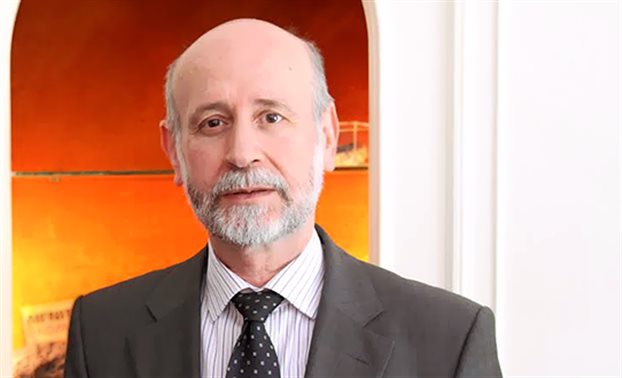The chairman of the Greek Mining Enterprises Association (SME) Athanasios Kefalas talked about the problems faced by the mining industry, as well as its great contribution to the Greek economy in his interview at Capital.gr. He stressed the fact that this sector, which employs more than 16,000 employees, is one of the few in Greece that did not proceed with wage reductions, but instead kept on seeking new “talents”.
It should be noted that the Greek Mining Enterprises Association (SME) represents the largest Greek mining companies, accounting for 90% of related activity. Some of its members are Delphi-Distomon, ELMIN, European Bauxites, Grecian Magnesite, Larco, AoG, Imerys, Pavlidis in the marble industry, large cement groups such as Titan and Lafarge and the mining section of the PPC.
Interview to Dimitris Delevegos
– Those who do not follow the activity of Greek mining companies, may consider that this sector has suffered a blow.
Mining plays an important part in the economy. According to the Foundation for Economic and Industrial Research (IOBE), it represents 3.4% of the GDP with its contribution amounting to 6.2 billion Euros, of which two billion concernsthe Prefecture of Attica. Its contribution, which is 1 billionEuros, is of great significance for the exports of Greece, the size of which, if we do not include oil, amounts to approximately 15 billion Euros. The industry continues to invest and attract major investors in Greece, such as the French groups Imerys, Keneosand Lafarge, receiving a vote of confidence by foreign investors in an unfavorable situation.
– Does the industry have an investment program?
According to a study conducted by SEV, there is a100 billion Euros investment gap. This figure derives from the difference between the value of the investments and the depreciation which amounts to approximately15 billion Euros and concerns the last seven years of the crisis. Aiming to contribute in covering this gap, we have planned, within the next five years, investments totaling 1.7 billion Euros for the development of new mines, the modernization of production lines, the use of by-products of processes, the maintenance of existing facilities and, of course, the restoration of the natural landscape.
– However, despite its great contribution to the economy, most representatives of the political world do not appear to be strong supporters of the mining industry.
In our country, there is a defamation of the business sector, discouraging public support events especially in regards to private investments. On the other hand, government officials have graced the openings of our own projects with their presence. There is no doubt that there is a reluctance to support specific investments which stems from the fact that, despite its importance, the mining industry is not attractive and is connected with the doctrine “notinmybackyard”. In this context, the main mission of the SME is to demonstrate the great contribution of an industry that creates job opportunities in the Prefecture, has been technologically modernized, with vertically integrated contemporary groups prioritizing issues concerning the restoration of the natural landscape and environmental protection.
– To which extent has the imposition of capital controls been a constraint?
The implementation of investments in our industry is not suffering due tothe capital controls, but due to the endless bureaucracy. The implementation of any investment takes up a minimum of five yearsand even when it is completed it still faces the insecurity of the legal system. The mining industry has a very long history, thus it has learned to wait, persist and endure. However, markets cannot wait and if the product does not come on time, someone else will be on it.
– How much time is required for an investment?
The approval of an environmental impact study requires, on average, approximately two to three years, and in some cases it can take up to six years. Take into account that this is despite the fact that it is mandated by law to complete the writing of an environmental impact study within 90 days and that in neighboring countries the process of obtaining a mining permit takes upa maximum of three to six months. As a result, we havea competitive disadvantage. It should also be noted that despite the widespread view that private initiative is against the best interest of the State, we have observed that public services have been stripped of executives with skills and experience. We are therefore in favor of an effective public administration, to ensure the integrated nature of the control of our activities.
– What is the mining industry suffering from?
Greece was the fourth country to establish a National Policy for the Exploitation of Mineral Resourcesin 2012, following the direction of the EU for the independence of the country in regards to imported resources. However, this national policy has not been implemented yet. In addition to this, there are also problems associated with land planning, licensing duration, legal insecurity, the unstable tax regime and the absence of incentives for investments. There are also issues in relation to the certification of mobile equipment operators for which a minimum of three years is required or it may never be completed when it comes to heavy vehicles, while in Bulgaria this process does not take up more than three months.
– Can mining be environmentally sound?
Historically, the evolution of human culture has been associated with cultivation and mining. It is no coincidence that the discrete changes of mankind are connected to extraction, which is an integral part of human activity. However, the impact on the landscape due to the progress of technology and landscape restoration methods is temporary.
Besides, studies of the University of Athens have showed that where restoration is done correctly, societies have developed rapidly. For us the challenge is not to restore the physical characteristics, but to gear towards exploitation after the mining activity. There is an impression that when a mining company completes its work, it leaves a hole in the society and the earth, which is not the case, given the state of the technological landscape restoration methods.
For example, in Milos we created a vineyard in the place of a mine. A museum with 10,000 visits a year has replaced an old bauxite mininggallery and in Milosa conference center has replaced a kaolin processing plant site. Therefore, the protection of the environment and mining activity can coexist, when the latter is inextricably linked to the adoption of measures to minimize its impact on the natural landscape.
– Are mining companies hiring?
We are one of the few sectors of the Greek economy that has not lowered wages or gone through with horizontal salary cuts. Simultaneously, the extrovert nature of our operations allows us to avoid wage reductions. Therefore, we are hiring and seekingpeople with new skills and wish to give opportunities to young workers. In this context, we implemented the program “Engineers in Action” by Aluminium, as well as a corresponding initiative byImerys. And we maintain, train and give opportunities. The Greek mining industry directly employsjust over 16,000 people, while the downstream employment amounts to approximately 180,000 jobs.
– Is there high demand for work in mining companies by young people?
We have gradually recorded a shift of interest for work in mining industry companies by young people. And in a situation where at least 50% of young people are plagued by unemployment, we are the only source of light in the darkness of unemployment, with the mining sector enabling young scientists to build an international career, by gaining valuable experience in Greece. The automation of our plants, the modern equipment, the training of our personnel in modern management models and our openness are characteristics that attract young prospective employees.
[SOURCE: http://www.capital.gr/, 27/10/2016]

